Whether you heard it from the Beach Boys, the “Mamas and the Papas”, Weezer, or “Phantom Planet”, the songs are true: California’s beauty stays with you long after you’ve left. It helps that over 840 miles of the state’s border face the Pacific Ocean, stretching from its windswept northern coast to Mexico in the south. Did you know that there are several black sand beaches in California? There are several beaches in Sausalito, California, that have black sand.
These beaches are popular since they are close to the Bay Area. Nonetheless, they are far smaller than the one located four hours to the north. Black Sands Beach in Shelter Cove stretches for more than 25 miles and is walker-friendly.
The black sand beach, although close to California, is yet relatively uncrowded because of its limited accessibility and lack of parking. Because of this, it’s a fantastic place to visit if you want some privacy or a peaceful day at the beach.
Because of the unusual iron-rich dark sand on the beach, this turns black when wet from the smashing waves. The majority of people are probably more accustomed to beaches with tan or white sand, but even if the sand here is more of a dark brown hue, it is still very different from those.
The sandy shoreline at California’s Black Sand Beach is accessible only by hiking. You can park at the Upper Fisherman’s parking lot if you’re lucky or arrive fairly early, which will save you a lot of time as you only have to walk down a short,5-mile route to reach the beach. You must take one of the trails specified below if you prefer to park at one of the other lots.
Pfeiffer Beach
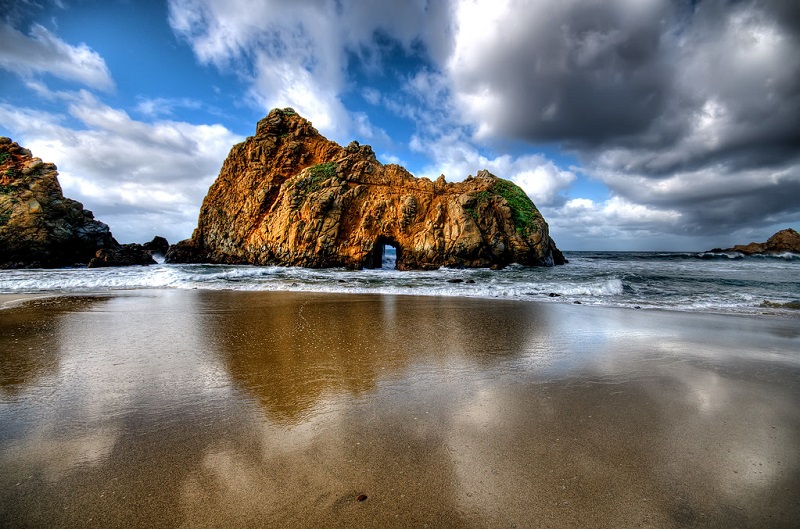
Renowned for its purple sand, which is colored purple by tiny garnet specks, Pfeiffer Beach on the Big Sur, PCH Highway 1 Tour is a photographer’s dream with its stunning craggy coastline, pounding waves, and the stunning Keyhole Sea Arch rock formation.
Pfeiffer Beach, is one of the biggest attractions in Big Sur national park, with remarkable violet and deep-purple-hued sands in addition to being surrounded by a gorgeous coastline of towering mountains, dense pine trees, and tumbling falls.
The hills’ manganese garnet, which has been eroded and washed down to the beach from the creek to the Pacific, is the source of the hue.
The northern portion of the shore has the highest concentration of purple sands, and after a winter storm, when the manganese garnet is being more quickly eroded, you’re more likely to observe bigger levels of purple. The contrast between the cerulean-colored waves and the purple-hued beaches is truly stunning.
Black Sands Beach
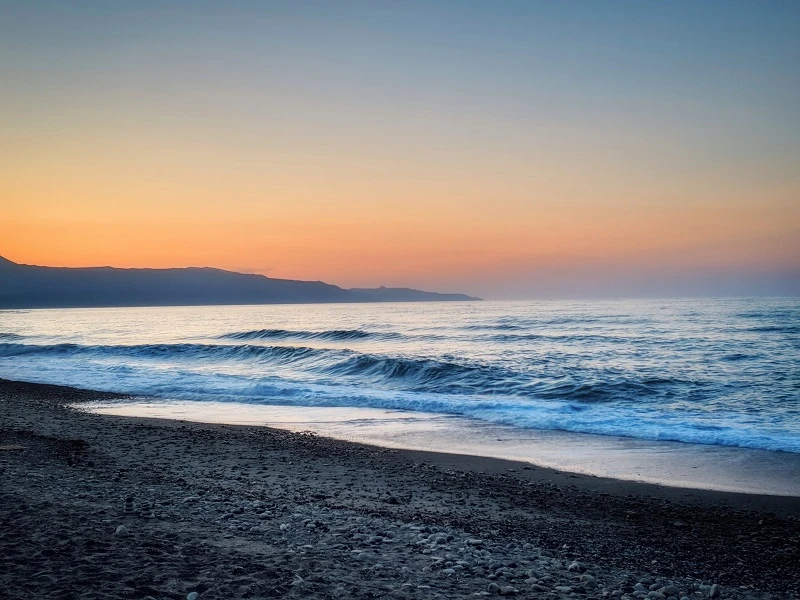
A distinctive and alluring location on Northern California’s Lost Coast is Black Sands Beach. As the only black sand beach in North America, this 5.5 km long beach is a must-see for travelers.
Black Sands Beach is incredibly beautiful, but it’s not the best spot to relax or go swimming because the seas are frequently too unsafe to go in. Typically, visitors observe the waves from a safe distance while admiring the stunning surroundings and untamed landscape that distinguish this beach from others.
The greatest time to visit Black Sands Beach is between September and January when grey whales are known to swim along the breaks. Visitors now have a fantastic chance to see how beautiful these majestic creatures are in their natural environment.
Overall, Black Sands Beach is a remarkable and breathtaking location that is undoubtedly worthwhile a trip. This beach has plenty to offer everyone, whether you want to trek, explore, or just take in the beauty of nature.
Montara State Beach
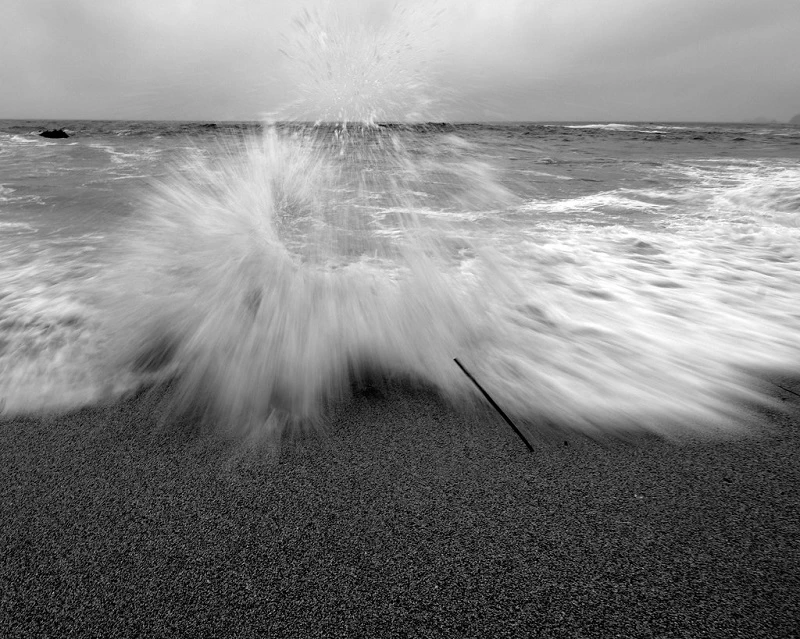
The Montara State Beach is a well-liked location for activities like surfing, strolling, wildlife study, and sunbathing. West of Highway 1 is a beach with towering bluffs and a sandy beachfront tucked in between enclosing low hills.
Montara Mountain, commonly known as McNee Ranch, towers over the area to the east. The Santa Cruz Mountain range’s northern offshoot contains the sole unaltered coastal mountain ecosystem along more than 100 miles of shoreline.
The communities of Montara and Moss Beach are close by, and both have dining establishments and supermarkets. A non-profit organization called Hosteling International provides overnight lodging at the Point Montara Lighthouse.
Shelter Cove
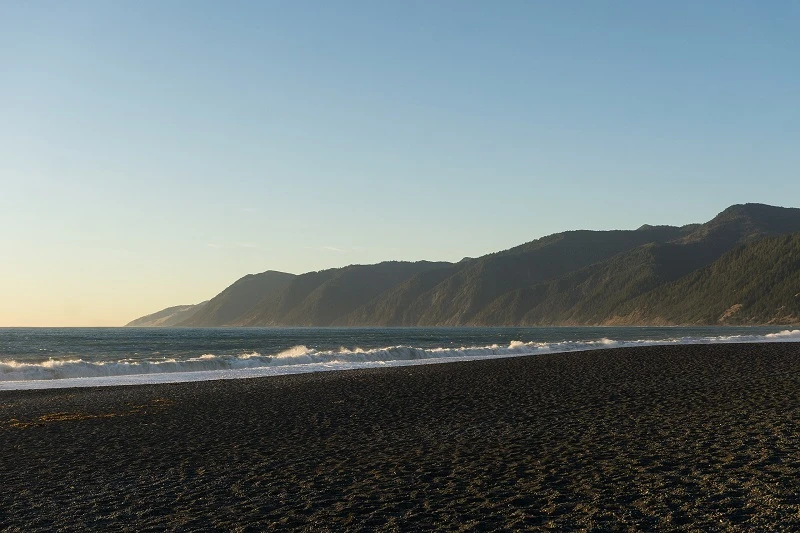
You may find Shelter Cove in the remote Lost Coast, which is well-named given that there aren’t many roads that lead there. A 20-mile stretch of rocky coastline with tremendous waves breaking against the craggy, cliffs makes up this California beauty.
Given how rapidly the water may get deep and turbulent, it’s not exactly a good place to swim. It’s hard to top strolling up here and breathing in the clean seaside air. This unusual sight is typically brought on by degraded volcanic rock that is deficient in silica but rich in minerals.
However, in some areas, it is produced by the tectonic activity of one continental and two oceanic plates colliding just offshore, resulting in the formation of dark shale and sandstone (greywacke). One of the finest ways to observe it is by hiking the Lost Coast Trail; free permits are available at the trailhead.
Black’s Beach
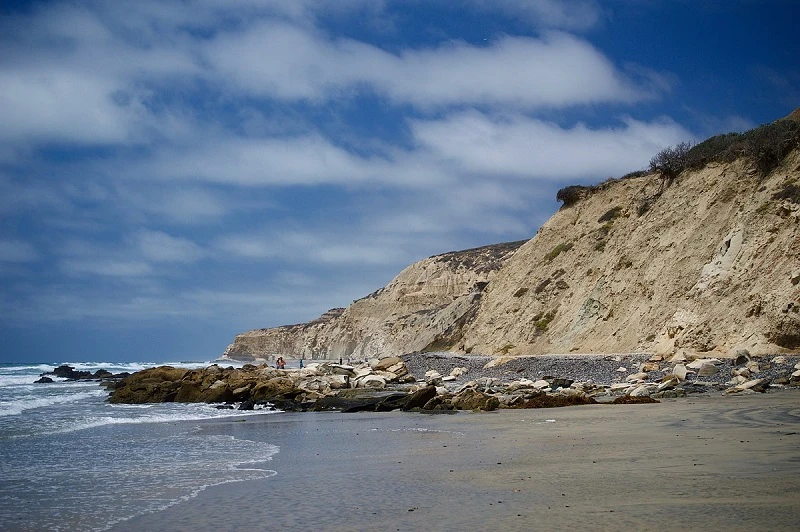
In San Diego, Black’s Beach is situated beneath the Torrey Pines bluffs and to the north of La Jolla Shores. It bears the family name Blacks, who formerly ran a horse farm on the cliffs above the shore. Today, San Diego Black’s Beach is divided between a northern and a southern section.
While the city owns the southern half, the state park owns the northern territory. It’s not unusual to see beachgoers exposing a little more skin than usual because nudity is allowed at the state park-run portion of Black’s Beach in the north.
A little over a mile long, San Diego Black’s Beach’s bikini- and swim trunks-optional section is a favorite destination for Southerners.
Black’s Beach was given its name in honor of the Black family, who maintained a horse ranch next to the shore. The land was divided into La Jolla Farms parcels when they sold it.
Residents of The Farms still use the Black family’s exclusive beach access road. The Salk Mansion is one of many houses that can be viewed on the southern part of the beach. The mushroom house is a building that is accessible via funicular from a mansion perched on a cliff down to the seashore.
Marin Headlands
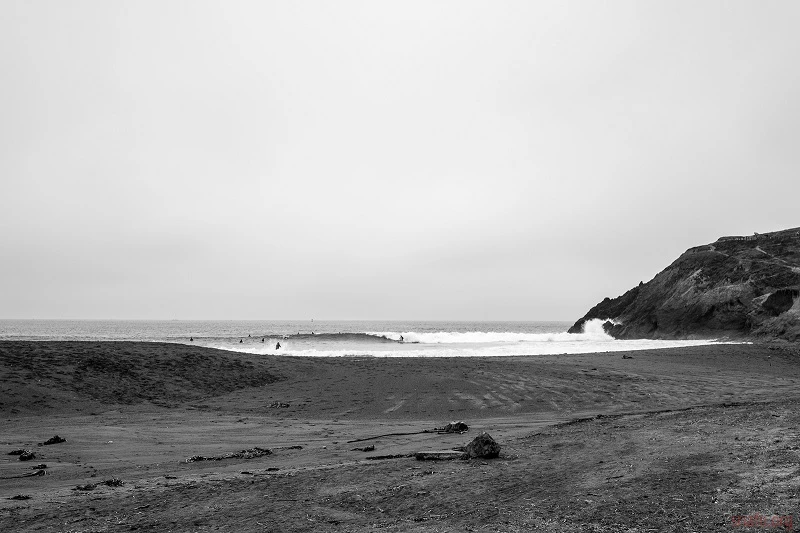
The Marin Headlands are renowned for their distinctive geology, their foggy coastal prairie environment, and their extensive historical records. The foghorn frequently echoes over the misty lagoon and rolling hills of coyote brush and sage, while dramatic cliffs of marine rock provide panoramic vistas of the Golden Gate Bridge.
The Headlands have a rich and lengthy human history that began with the Coast Miwok peoples who inhabited this area for thousands of years before becoming a focal point for coastal defense during the Cold War.
Glass Beach
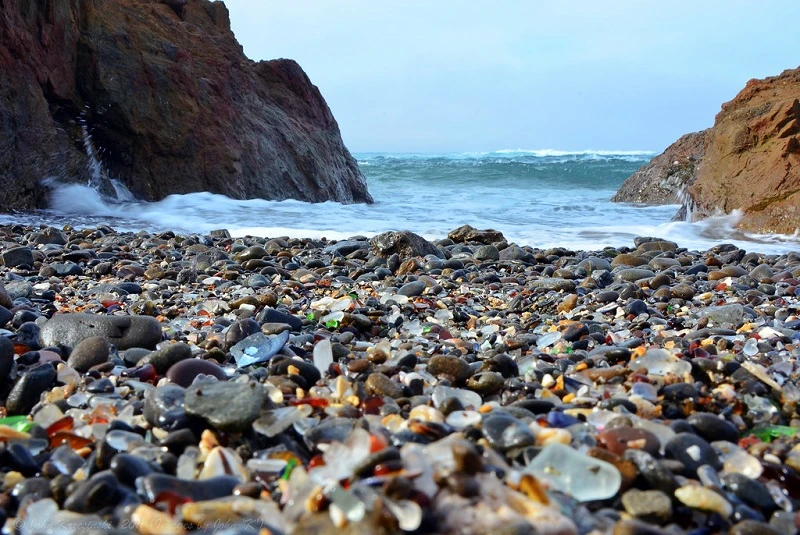
According to its name, Glass Beach is one of California’s most distinctive beaches. It is covered in tiny, spherical sea glass fragments that have been smoothed over the years by the waves after being thrown over neighboring cliffs and into the water (as was common practice for getting rid of coastal city waste during the early 20th century).
The vivid green, white, and soda-bottle-brown shards that adorn the coves—some dating as far back as the 1800s—are technically trash, but there is beauty in them.
The three distinct beaches of Glass Beach are passed by the beautiful Noyo Headlands Coastal Path. Keep a watch out for uncommon red and blue bits, such as shards of cracked tail lights and shattered bottles of prescription medication.
In MacKerricher State Park, the bluff overlooking beach number three is the ideal location for a picnic. While it’s against the law to remove the glass, you can take as many photos as you want as long as you leave the beach in the same condition.
Lost Coast
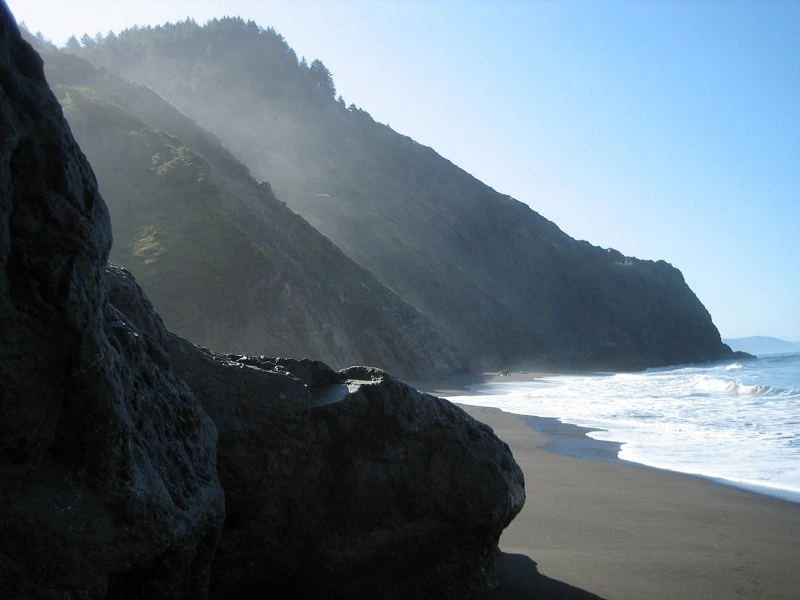
In the counties of Humboldt and Mendocino, California’s Lost Coast is a rough, isolated area where the state meets the Pacific Ocean. This stretch of wild coast was designated the country’s first National Conservation Area in 1970, and because of its intimidating nature, it was mostly maintained.
The Lost Coast is currently the only portion of California’s coastline undeveloped by the Pacific Coast Highway (often referred to as Highway 1), which veers inland for 20 miles throughout this section. The stiff land proved too difficult and expensive to develop in the 1930s.
The less well-known southern leg of the famed Lost Coast Trail runs for an additional 9 miles, while the northern section covers over 25 miles. The King Range Wilderness is still uninhabited despite these popular routes.
One of the wettest places in the US, the area receives more than 100 inches of rain a year, the majority of it falling between October and April. Because of these challenging conditions, the drier months of May through September are the best times to hike on the Lost Coast Trail, while the weather in this region is often unpredictable.
Rockaway Beach
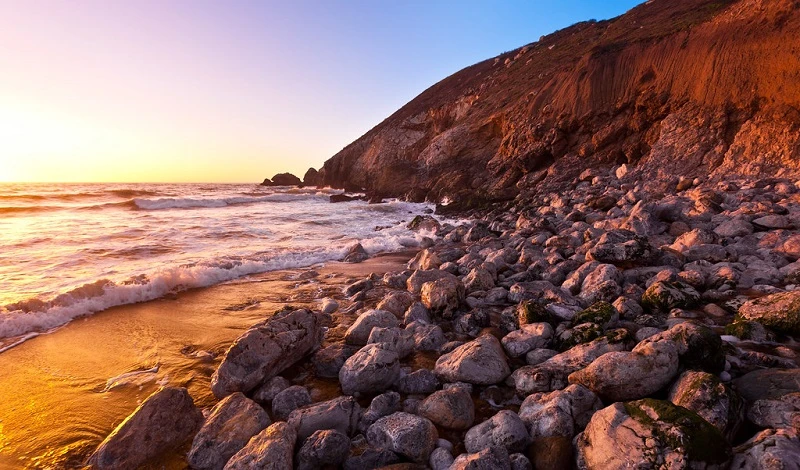
Rockaway Beach is a long, narrow, gently curving sand expanse protected from further erosion by steep coastal bluffs at either end. It is a popular site for both locals and tourists because of the crashing surf, trail amenities, sunsets, and spectacular headlands. A paved bike route runs north and south from the beach, and there are hiking trails to explore the rocky point south of the beach.
A mile to the south, Rockaway Beach and Linda Mar Beach are connected by the Coastal Path. The southward switchbacks lead to a cliff with fantastic views of the surroundings. The trail continues to Sharp Park in the north.
The San Francisco garter snake, San Bruno elfin butterfly, and California red-legged frog are just a few of the species that call the nearby Calera Creek riparian corridor and quarry home. Other species include small mammals, a variety of birds, amphibians, and reptiles.
Conclusion
California has many beautiful beaches. Some of them are just incredible for nature people. From the rugged and remote coastline of the lost coast to the popular and photogenic Pfeiffer Beach, each of them has an amazing display of black sand and scenic vistas.
Whether you’re seeking a private spot for relaxation or a truly adventurous day trip, it’s impossible to go wrong with a nice black sand beaches in California. That’s why we decided to put together this amazing selection of some of the most exciting California black sand beaches. . Place your surfboards, bikinis, and towels in your car.
